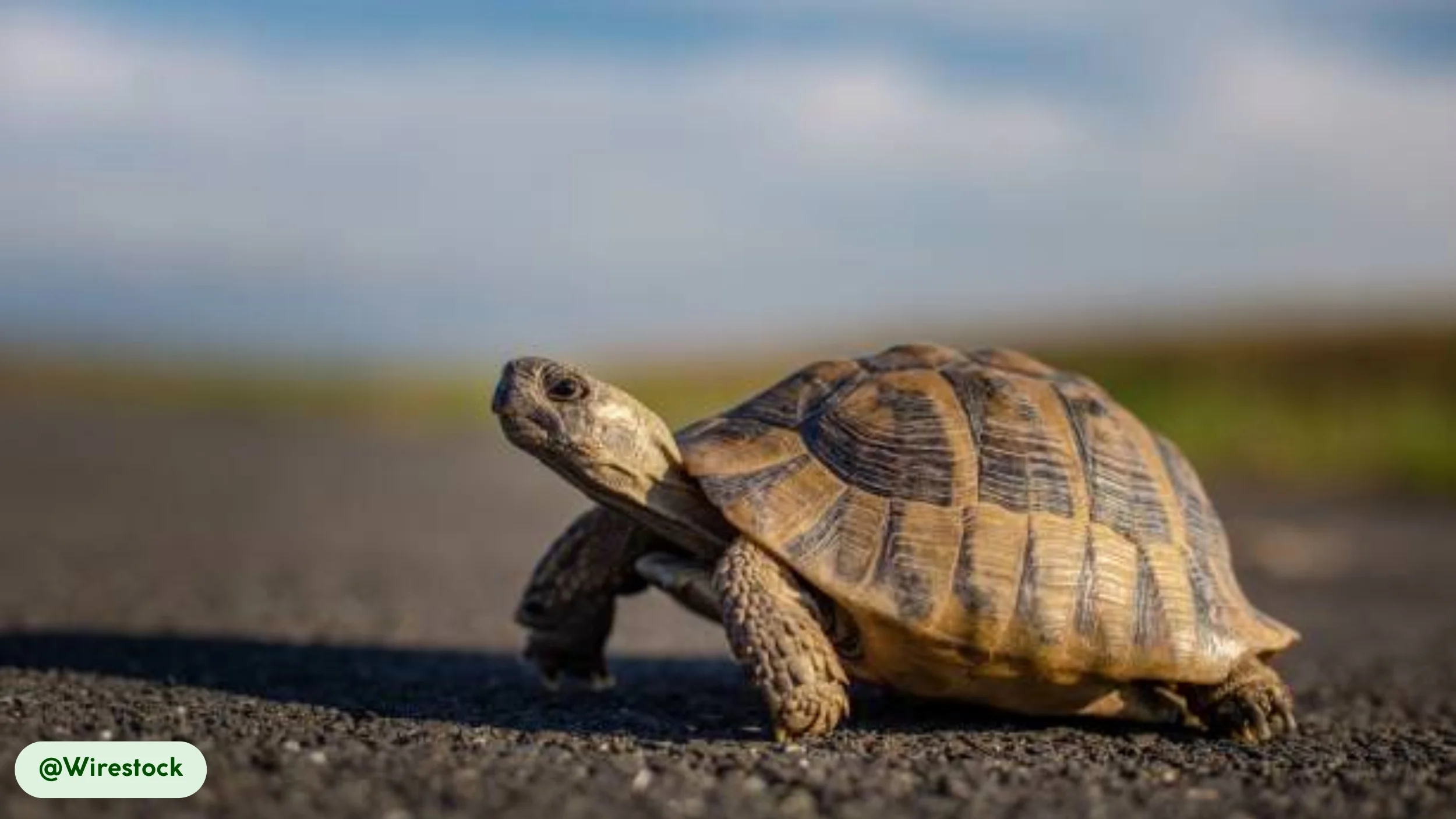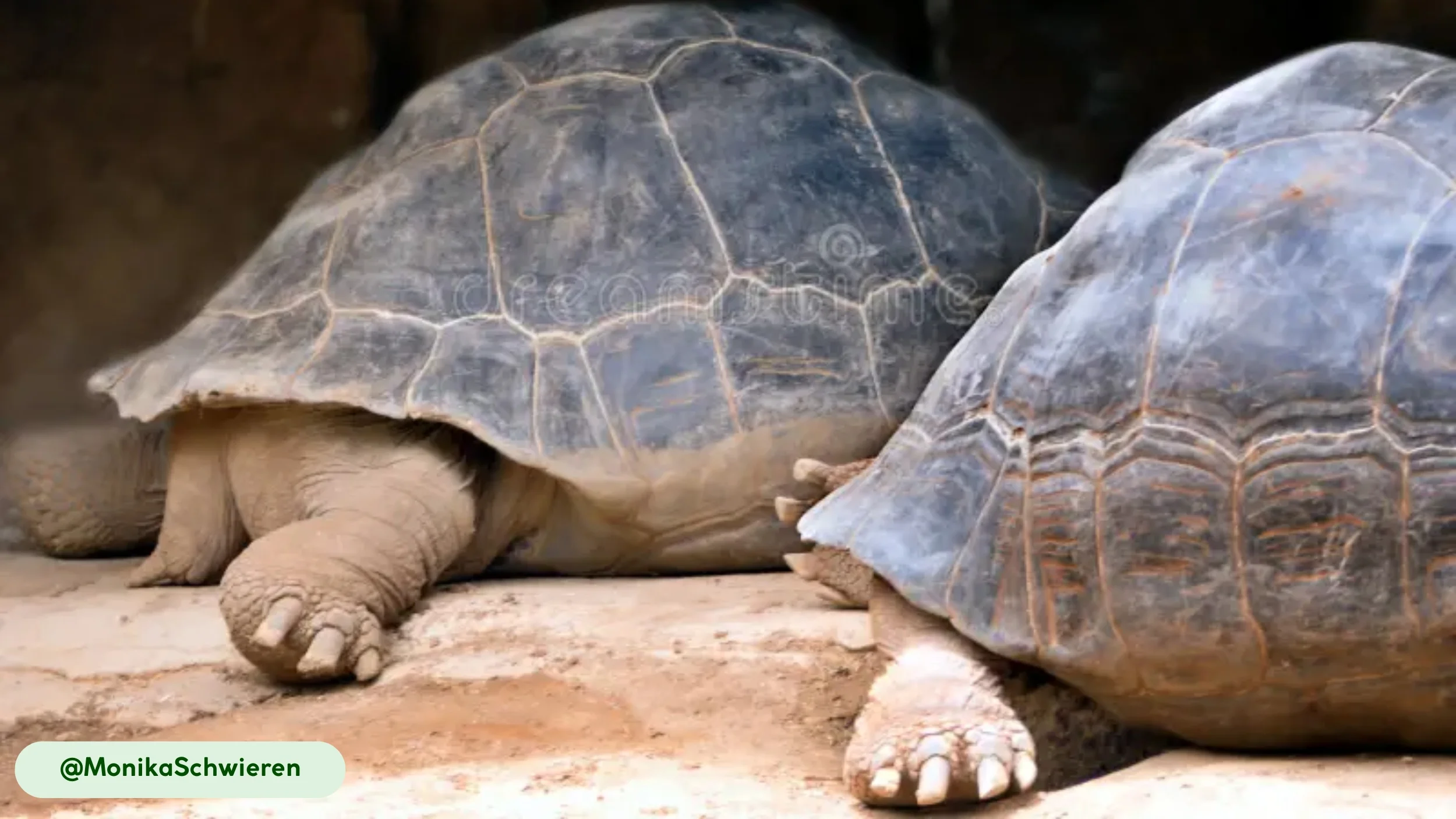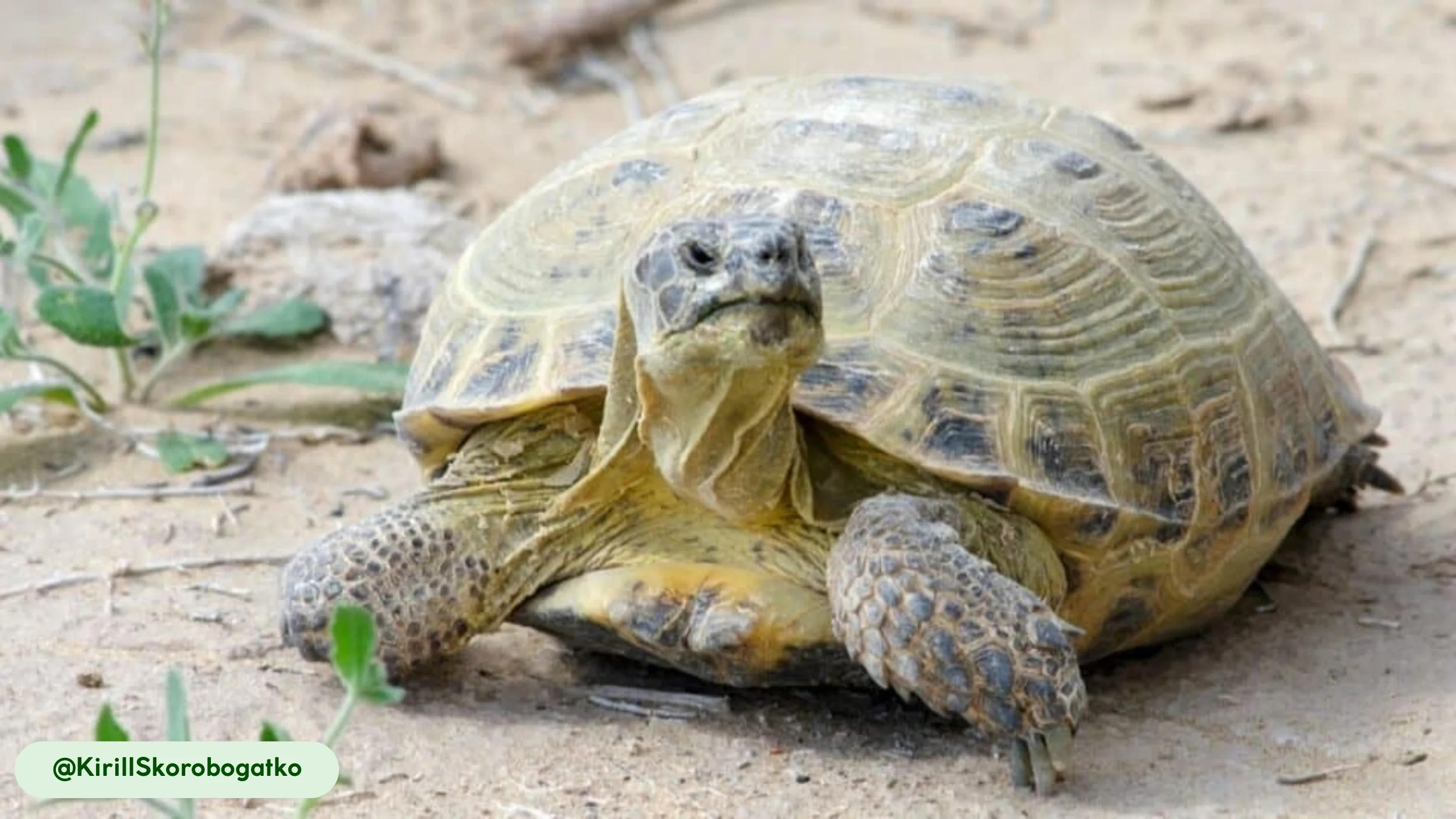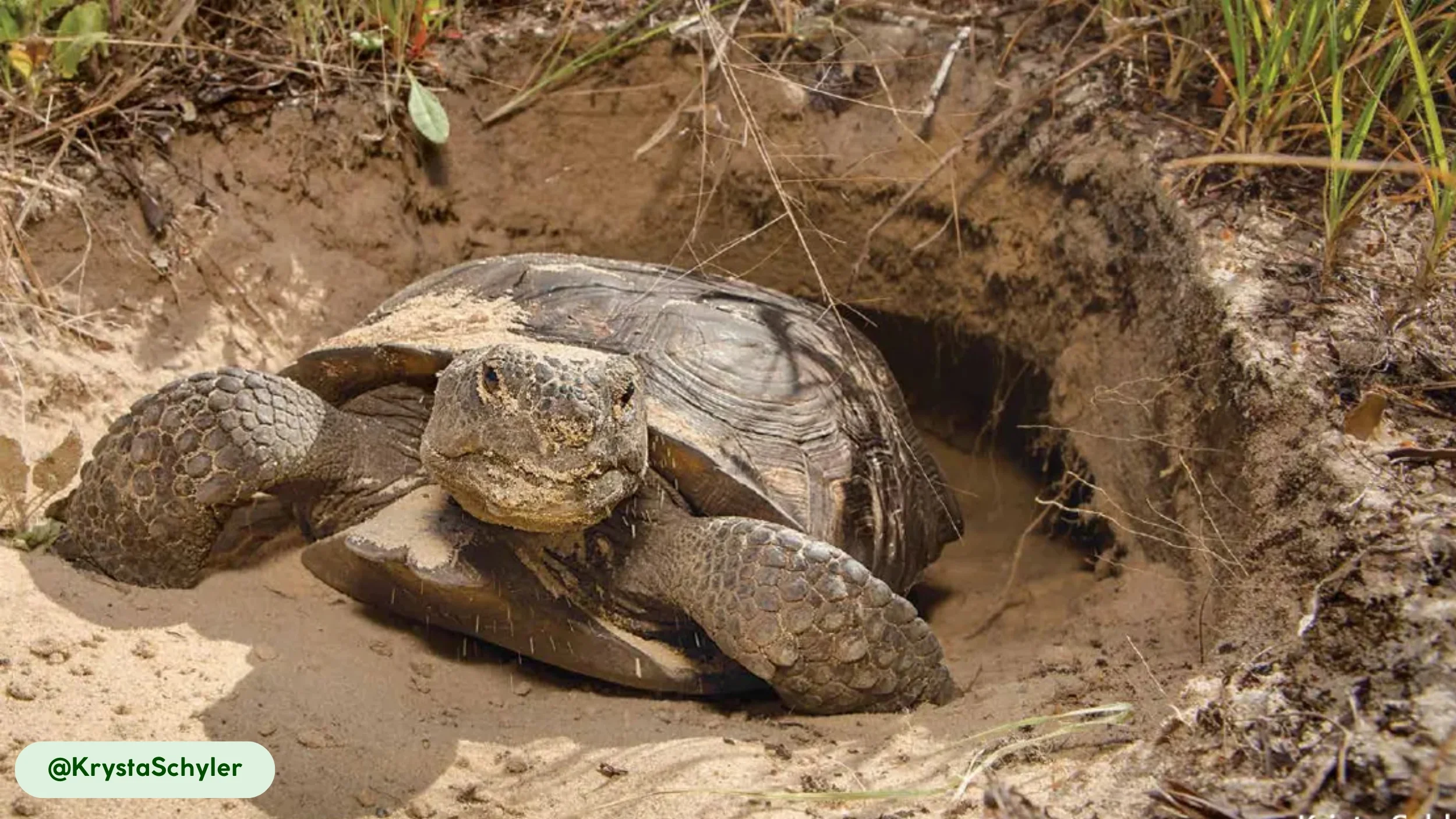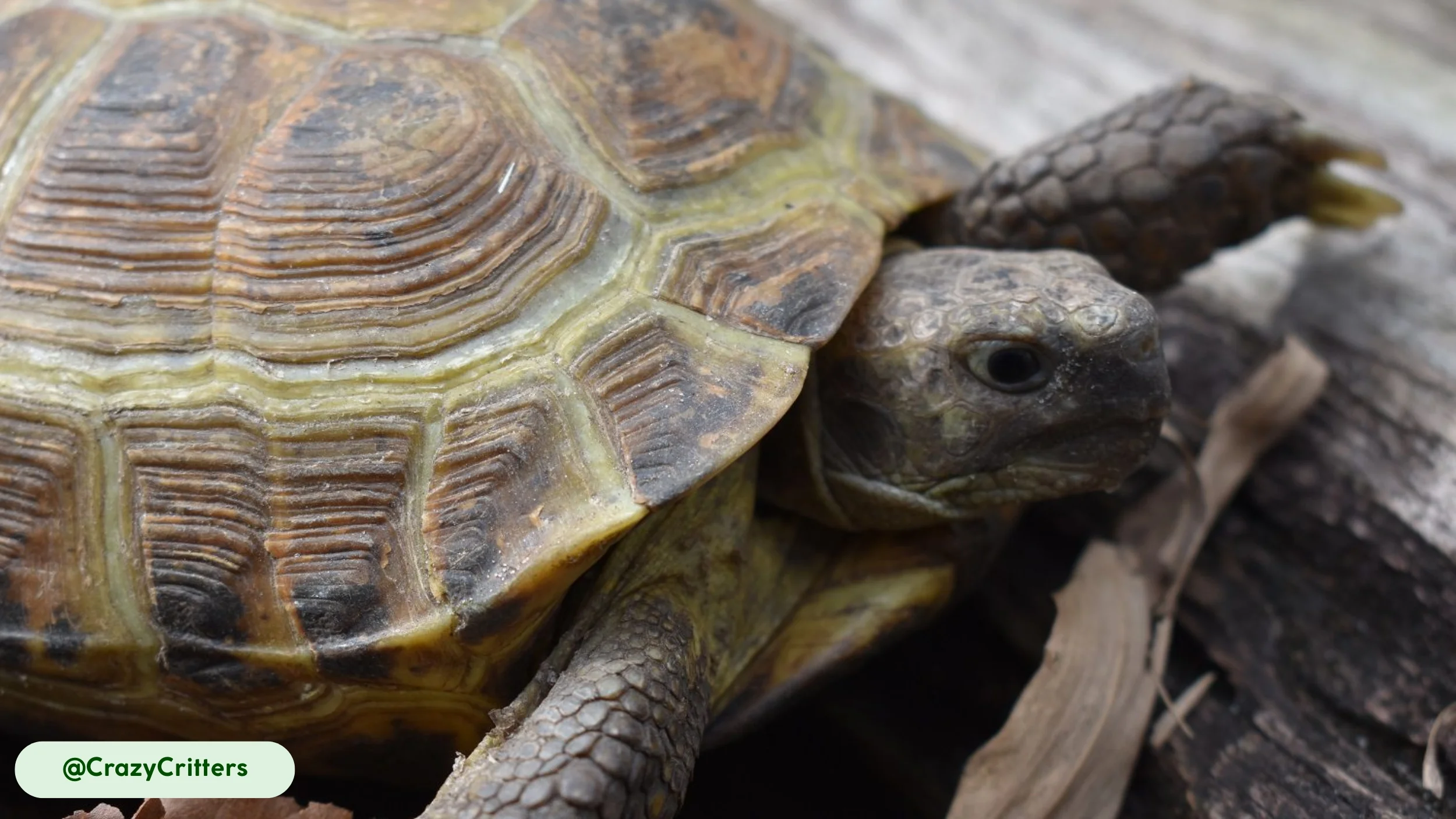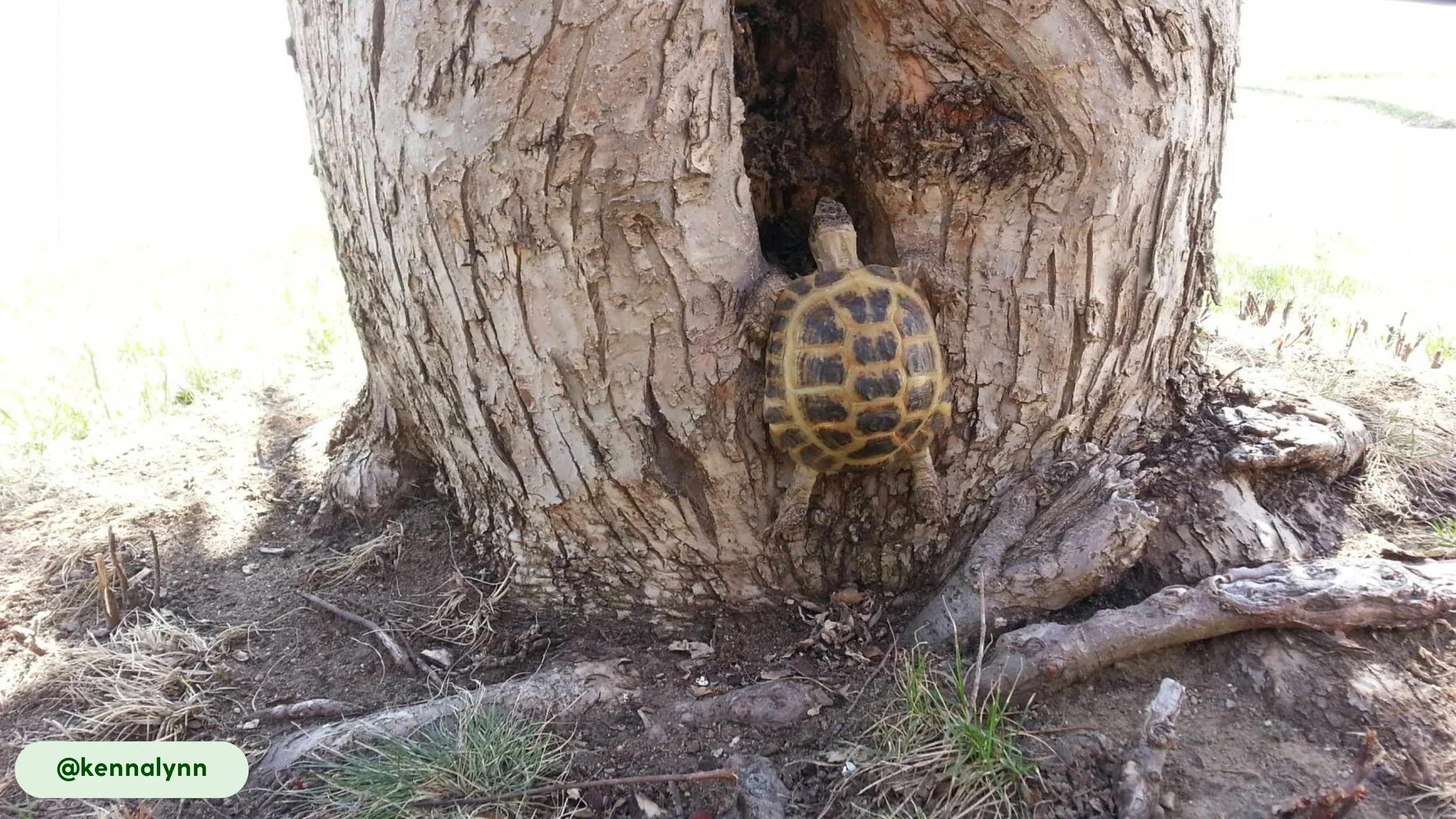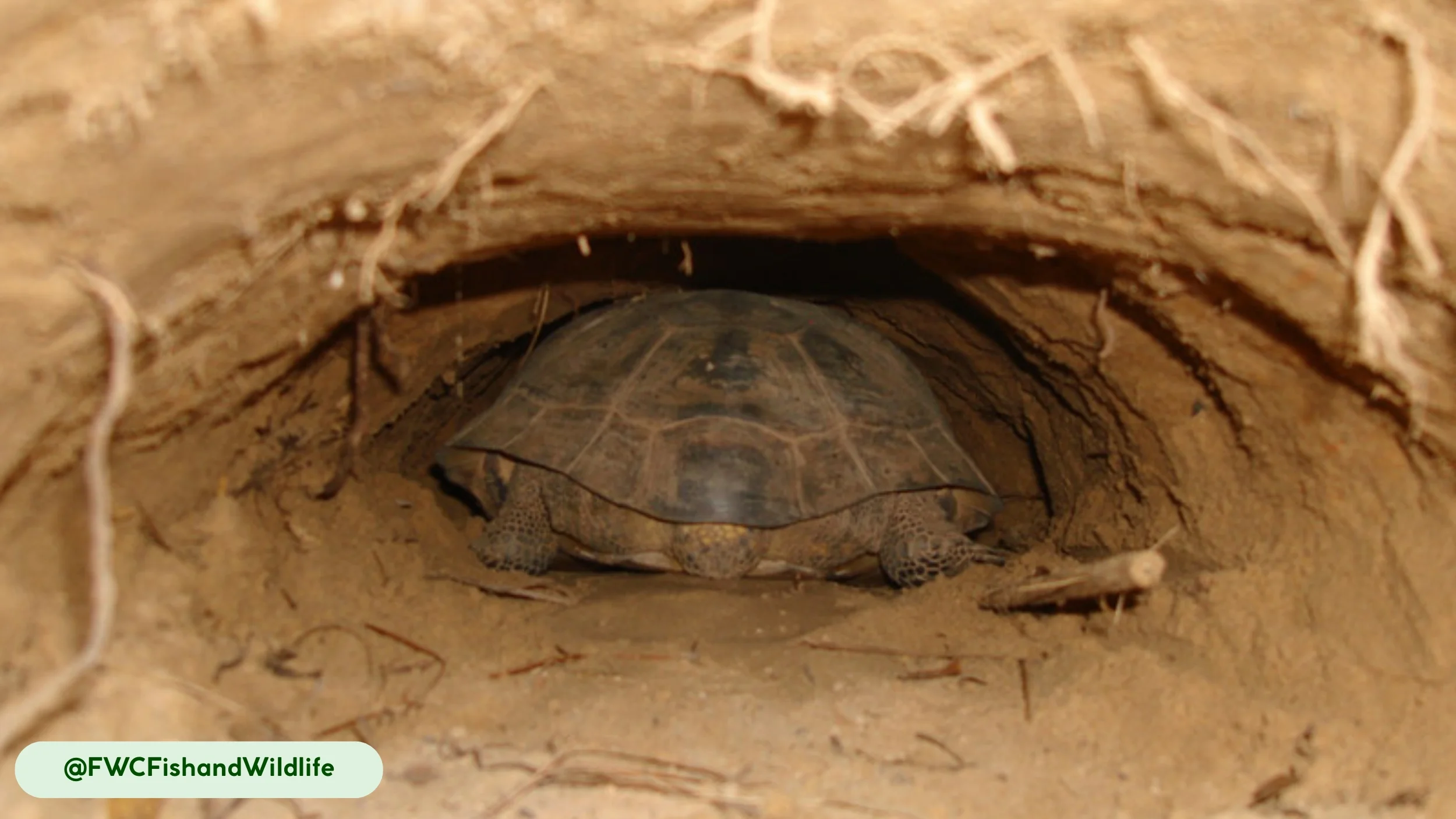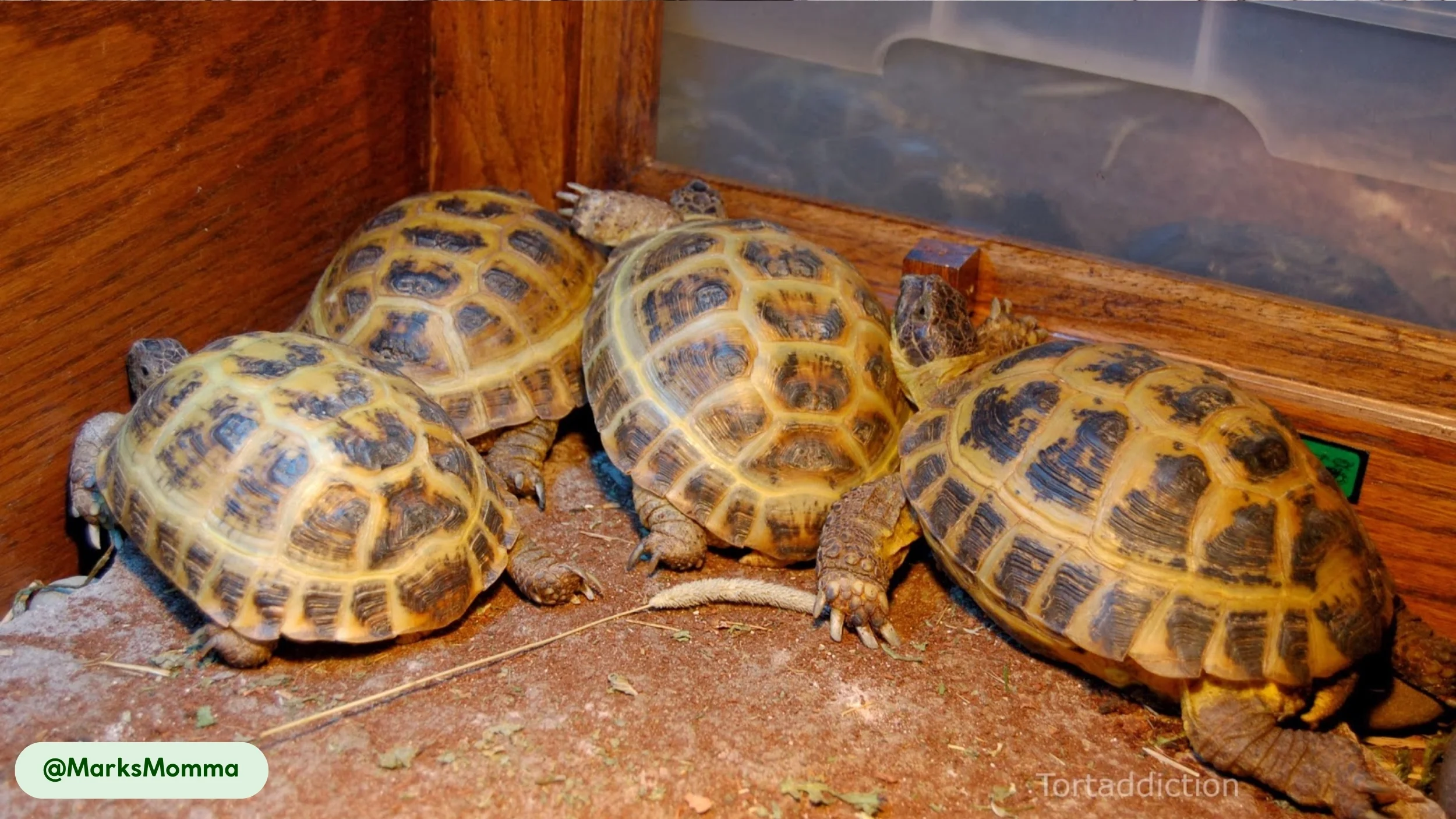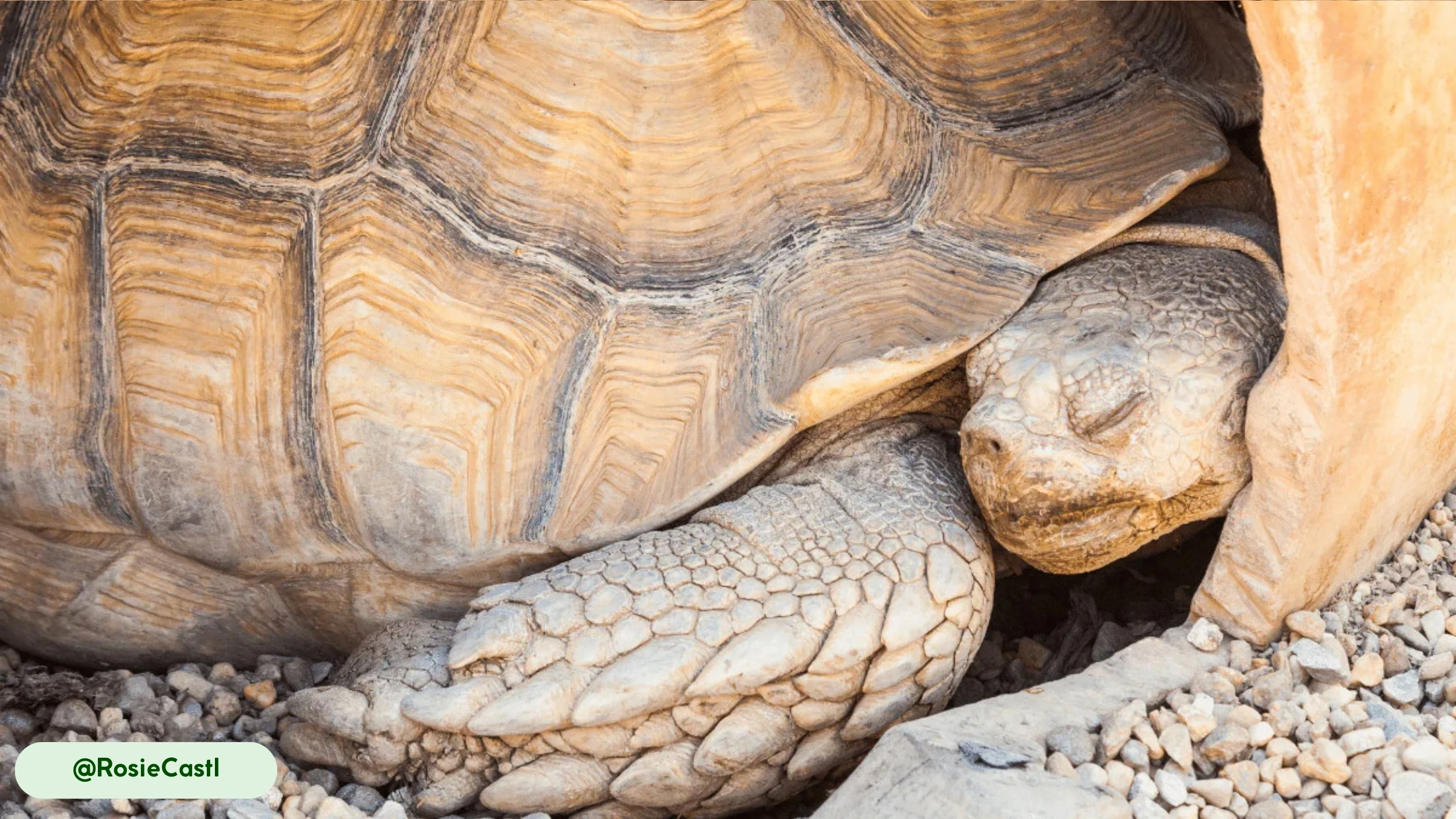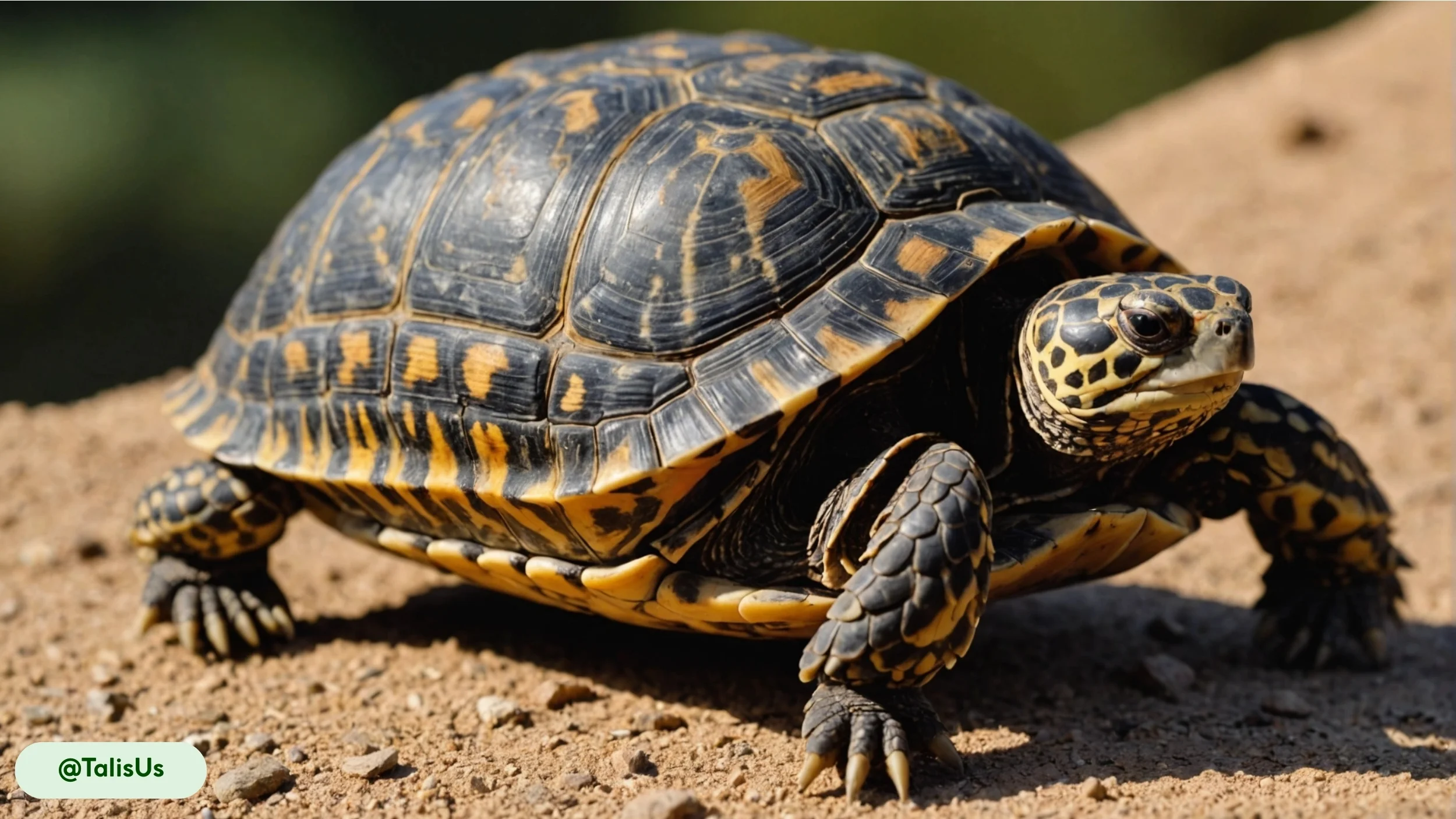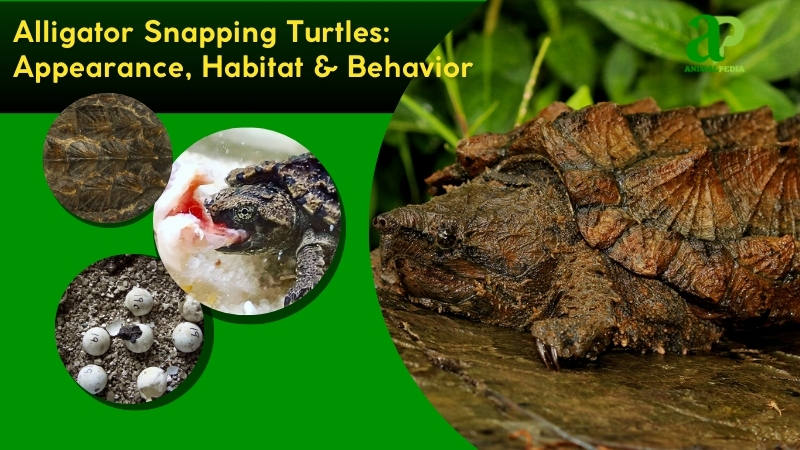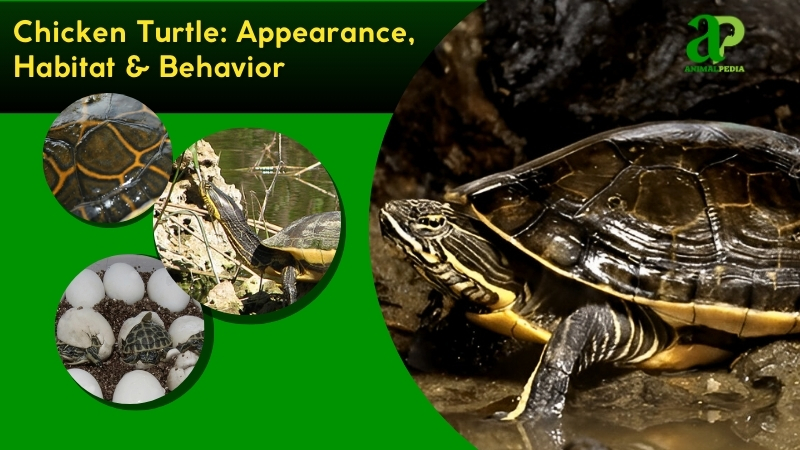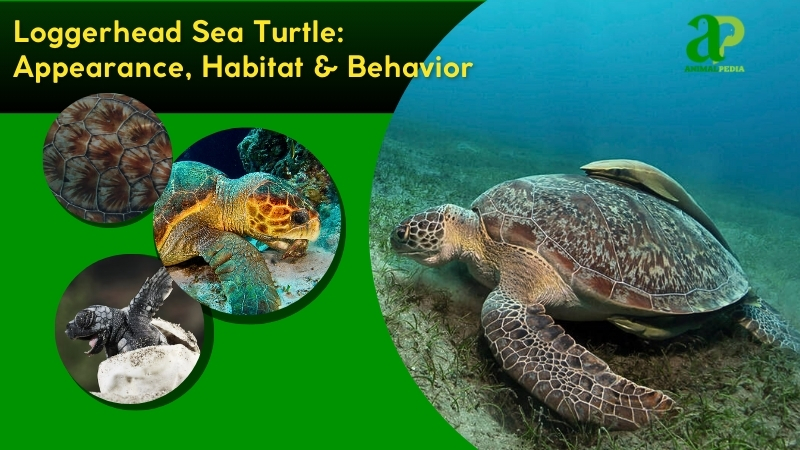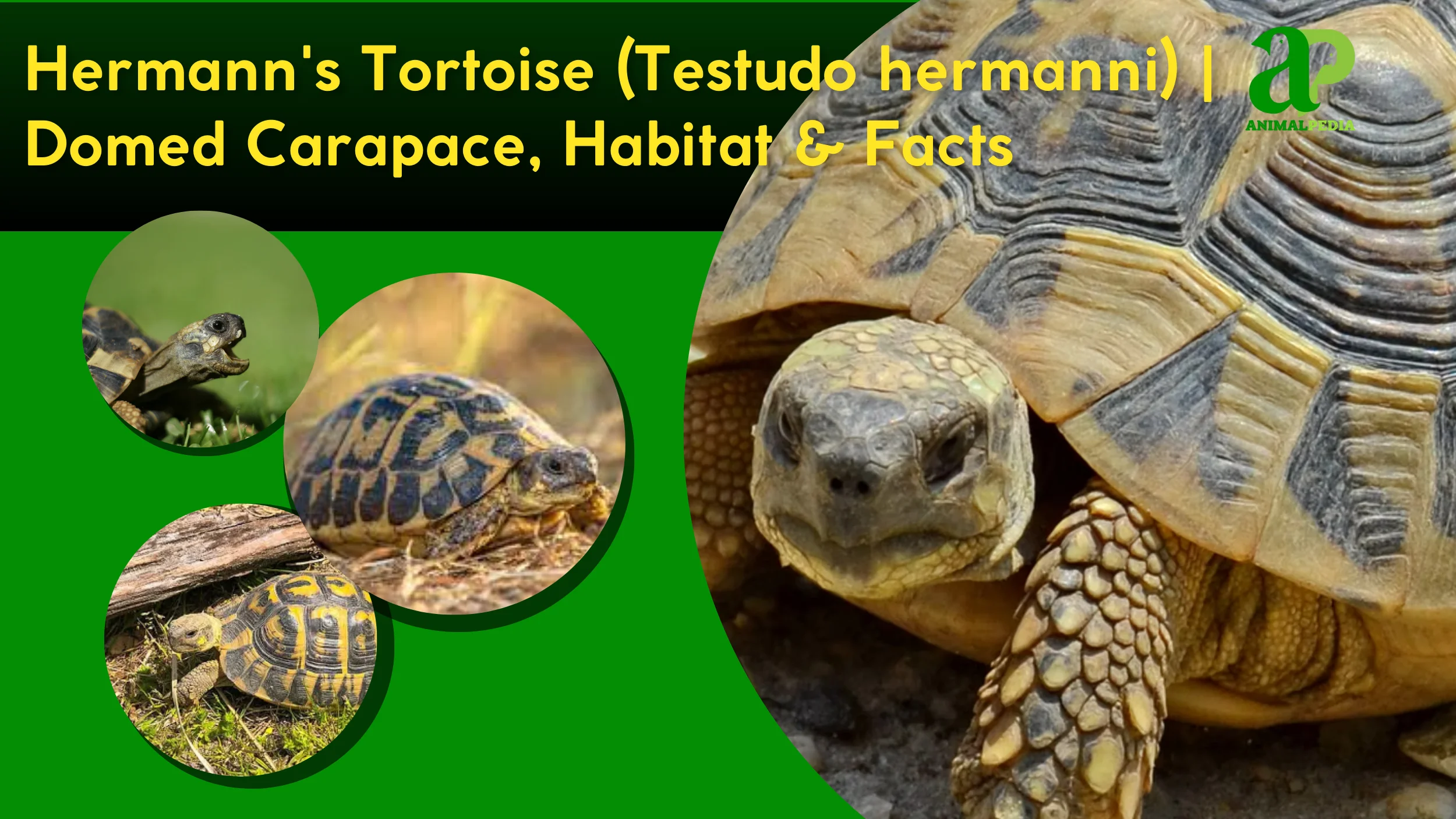The Russian tortoise (Testudo horsfieldii) is a small-to-medium-sized species of tortoise known for its exceptional burrowing ability and resilience in arid climates. This reptile is a prominent member of the Testudinidae family. They are found across a wide geographic range that spans Central and Southwestern Asia, inhabiting arid steppes and grasslands [1]. With a herbivorous diet, they primarily consume grasses, weeds, and other herbaceous plants [2]. These tortoises are active during the day, with seasonal patterns dictated by the weather, including a period of hibernation [1]. They possess physical adaptations, such as a compact body and powerful limbs, that enable their movement and burrowing capabilities [27]. The species’ conservation status is listed as Vulnerable on the IUCN Red List [29]. This comprehensive guide provides a detailed overview of the Russian tortoise, examining its unique biology, behavior, and its role within both its ecosystem and human society.
Understanding this species requires a closer look at its scientific classification, physical attributes, and ecological niche. What makes these tortoises so well-suited to their environment, and what are the primary challenges they face? This exploration moves from the foundational aspects of the species’ taxonomy and physical characteristics to its specific behaviors and conservation needs.
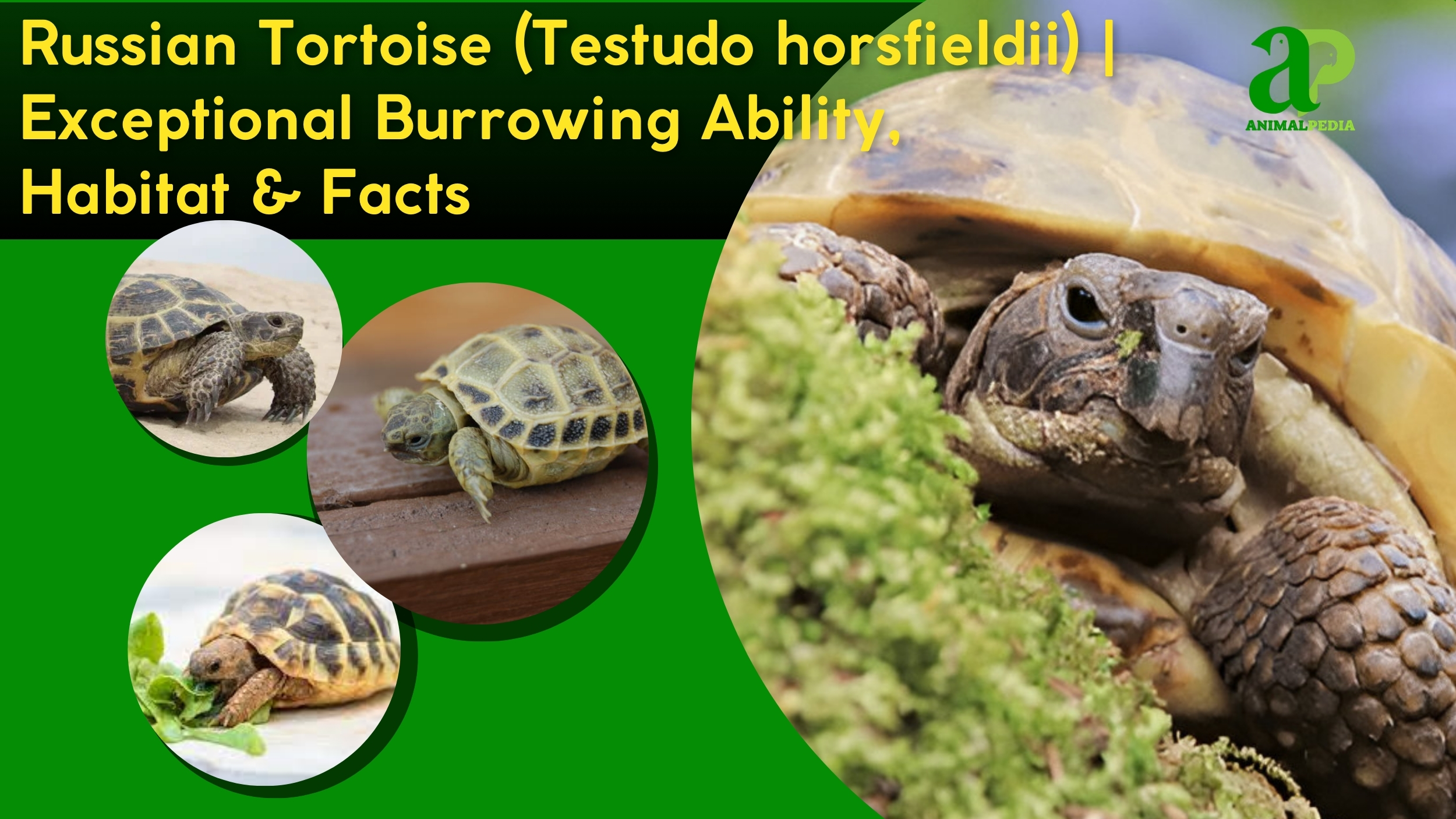
What Are Russian Tortoises?
The Russian tortoise is a terrestrial reptile native to the arid steppes of Central and Southwestern Asia, distinguished by its strong burrowing behavior and hardiness [1]. This reptile is scientifically classified as Testudo horsfieldii. It belongs to the family Testudinidae and the order Testudines, within the broader class Reptilia [22]. Other common names for the species include Horsfield’s tortoise, Central Asian tortoise, and Steppe tortoise. The species was first described in the early 19th century by the American naturalist Thomas Horsfield, after whom the species name horsfieldii is derived [5].
Debates regarding the taxonomic placement of Testudo horsfieldii exist among researchers [22]. Some scientists argue for its reclassification into the genus Agrionemys based on morphological and genetic data, suggesting a distinction from other Testudo species [30]. Other phylogenetic analyses, however, support its retention within the Testudo genus [22]. This taxonomic debate is important as it influences conservation strategies and breeding programs. The species is closely related to other tortoises within the Testudinidae family, sharing similar characteristics adapted for terrestrial life. Its notable physical features, which allow it to thrive in its environment, are a clear indicator of its unique biology and a logical starting point for understanding its appearance.
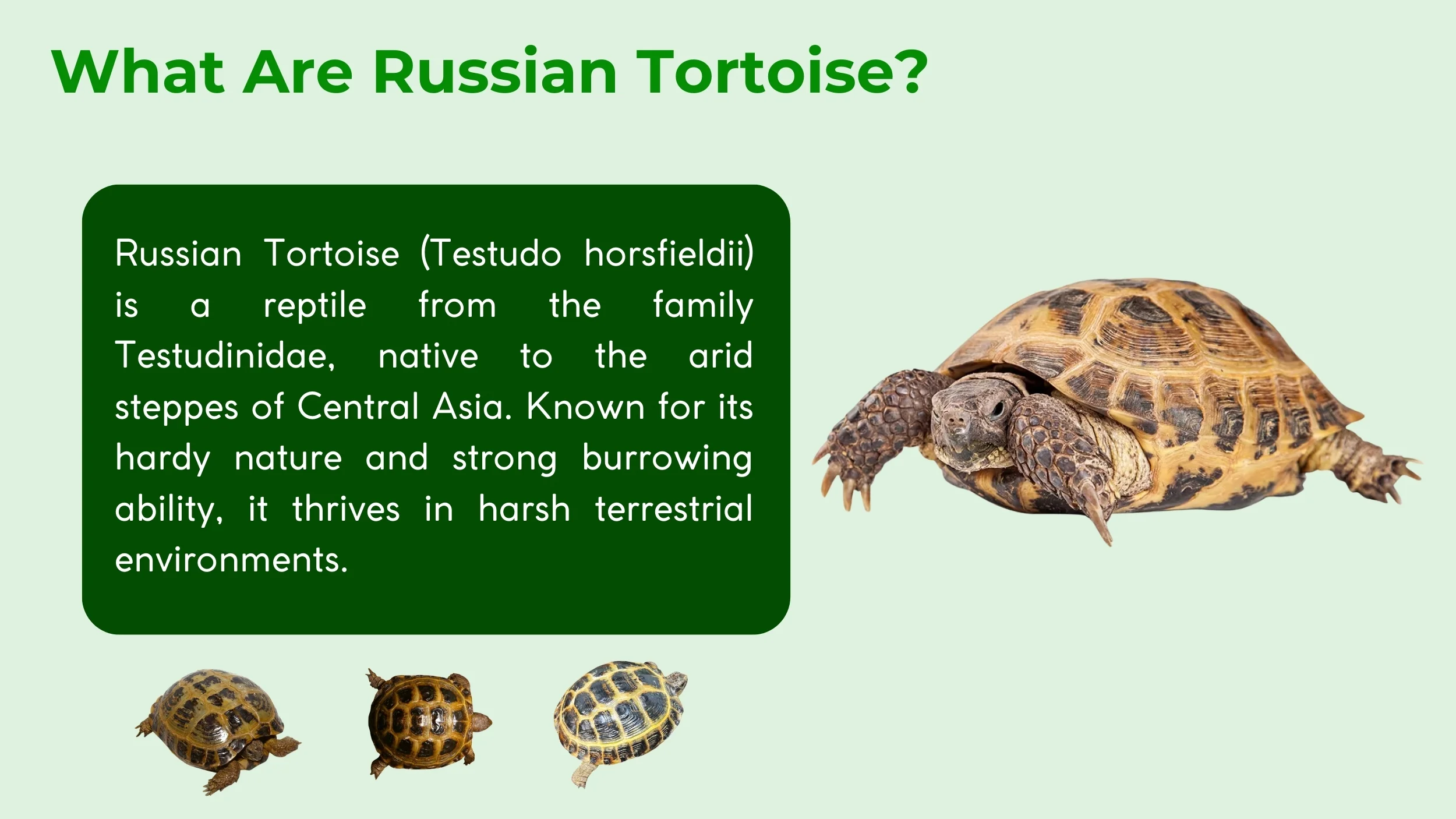
What Do Russian Tortoises Look Like?
Russian tortoises exhibit a compact, rounded physical form, characterized by a low, domed shell, or carapace. The coloration is generally yellowish-brown, olive, or light tan, with darker brown or black markings on the scutes [23]. The skin on their head and limbs is a similar shade of brown or tan, often with a smooth texture. The overall body structure is sturdy, enabling them to move efficiently and withstand the elements in their native environment [27]. These animals are known for their distinct appearance, with several characteristics that differentiate them from other tortoise species. There are five key features that define the appearance of the Russian tortoise.
These are their low, domed shell, powerful limbs, distinctive plastron, claws on their hind feet, and their coloration. Each of these features provides a unique insight into their biology.
- Low-domed Carapace The shell is typically lower and more rounded than many other tortoises, featuring a flattened area on top. The scutes on the shell often display a darker border, creating a noticeable pattern.
- Powerful Limbs Russian tortoises possess shovel-like forelimbs with five claws that are well-suited for digging burrows. The back legs are powerful, helping propel the tortoise forward and aiding in their excavation efforts [23].
- Unique Plastron The plastron, or bottom shell, is marked by prominent dark blotches. These patterns can vary between individuals, providing a means of identification.
- Four Claws on Hind Feet Unlike their forelimbs, which feature five claws, the hind feet have only four claws. This is a defining trait of the species [13].
- Overall Skin Coloration The skin is a light brownish-yellow. The coloration is uniform across the head, limbs, and tail, providing a consistent appearance that blends with their arid habitat.
Sexual dimorphism is present in Russian tortoises, allowing for distinction between males and females based on physical attributes. Males typically have a longer, thicker tail than females, with the cloaca positioned further from the body [23]. The male plastron often shows a slight concavity, a feature that facilitates mating. Female tortoises are generally larger in both length and weight than their male counterparts.
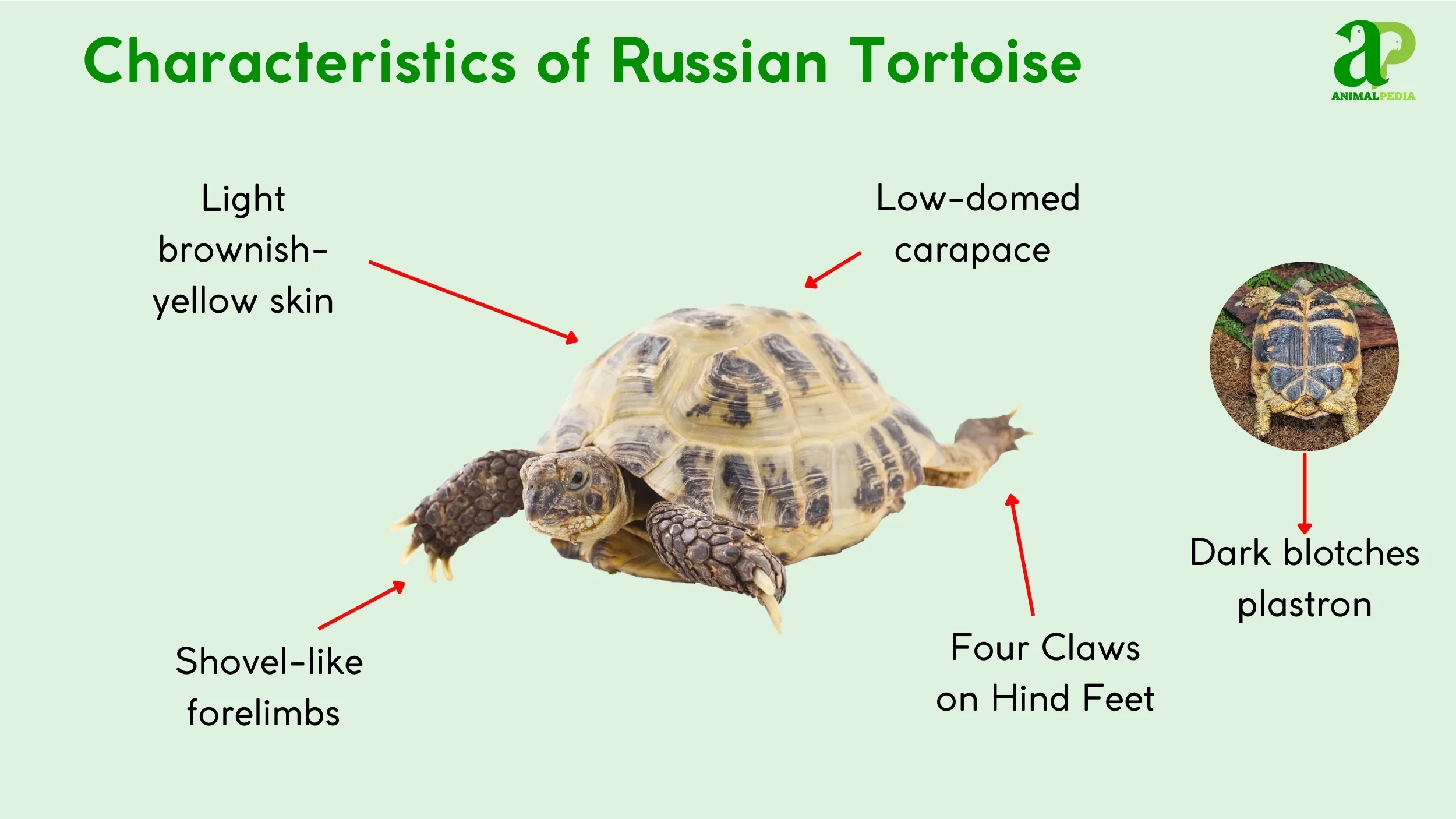
How Big Are Russian Tortoises?
Adult Russian tortoises exhibit a size range with noticeable sexual dimorphism. Males average 5 to 6 inches (12.7 to 15.2 cm) in length, while females are larger, reaching 6 to 8 inches (15.2 to 20.3 cm) [23]. These size differences are consistently observed across the species.
| Male | Female | |
| Average Length | 5-6 inches (12.7-15.2 cm) | 6-8 inches (15.2-20.3 cm) |
| Average Weight | 0.5-1.5 lbs (0.2-0.7 kg) | 1.5-2.5 lbs (0.7-1.1 kg) |
| Record Size | up to 7 inches (17.8 cm) in captivity | up to 10 inches (25.4 cm) in captivity |
Growth stages progress from a hatchling, which can be compared to the size of a golf ball, to a juvenile, and finally to an adult, which can be similar in size to a small cantaloupe [7]. This gradual increase in size allows them to grow over many years, contributing to their long lifespan. The places where they live and their remarkable behaviors make them well-suited to their environment.
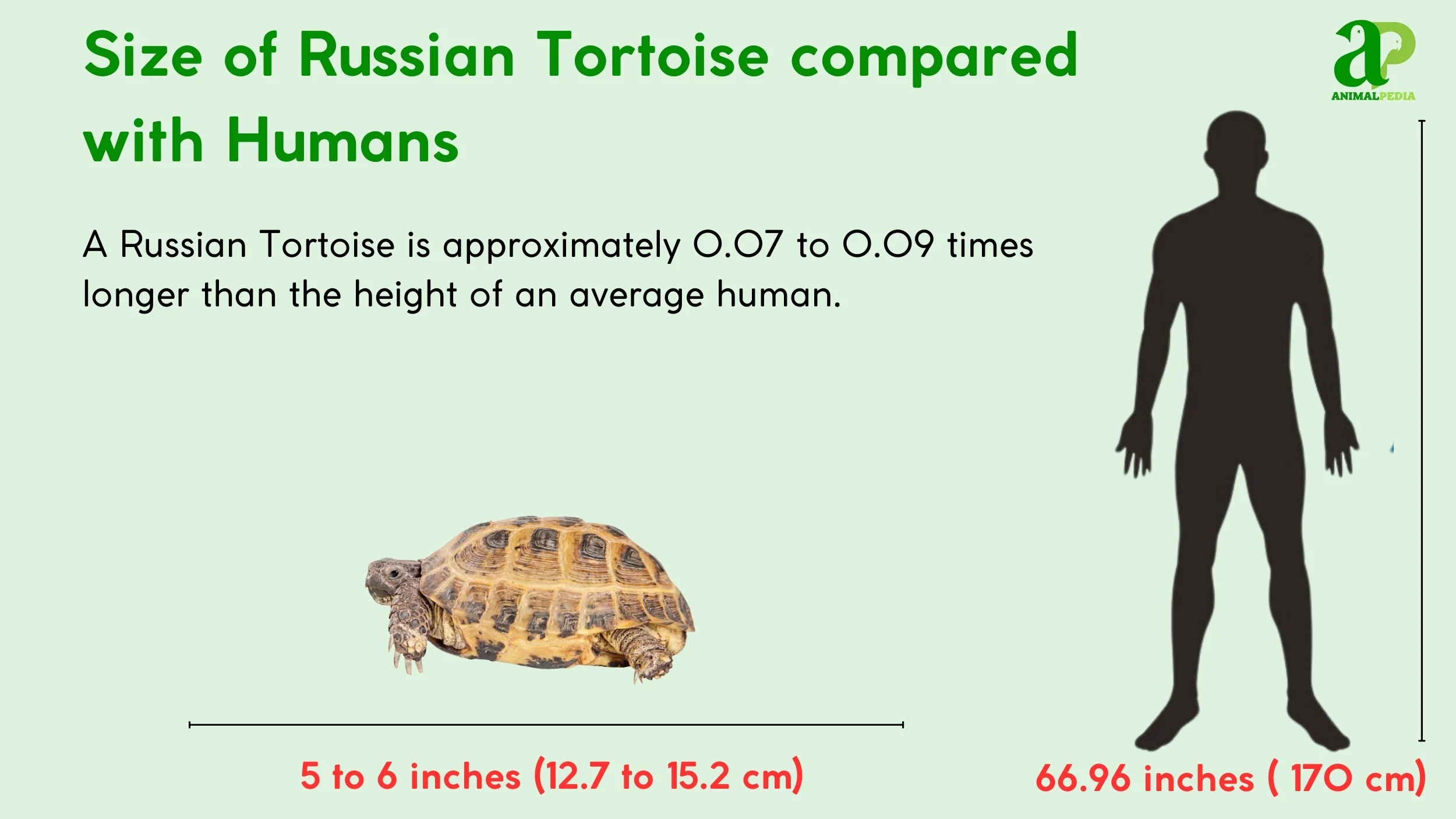
Where Do Russian Tortoises Live?
Russian tortoises are native to arid, semi-arid, and steppe habitats across Central and Southwestern Asia. Their geographic distribution includes countries such as Afghanistan, Pakistan, Iran, and portions of Russia and China [1]. They are adapted to climates with significant seasonal temperature variations, tolerating hot summers and cold winters.
This species is typically found at elevations between 3,000 and 5,000 feet (914 to 1,524 meters), inhabiting sandy areas with sparse vegetation [23, 31]. Their habitat is characterized by a dry climate and temperature extremes, which necessitates their ability to create extensive burrows. These burrows provide a refuge from predators and temperature fluctuations. Within their territory, males may demonstrate aggression toward one another, establishing dominance hierarchies [4]. The fascinating behaviors of the Russian tortoise allow them to thrive within these challenging habitats.
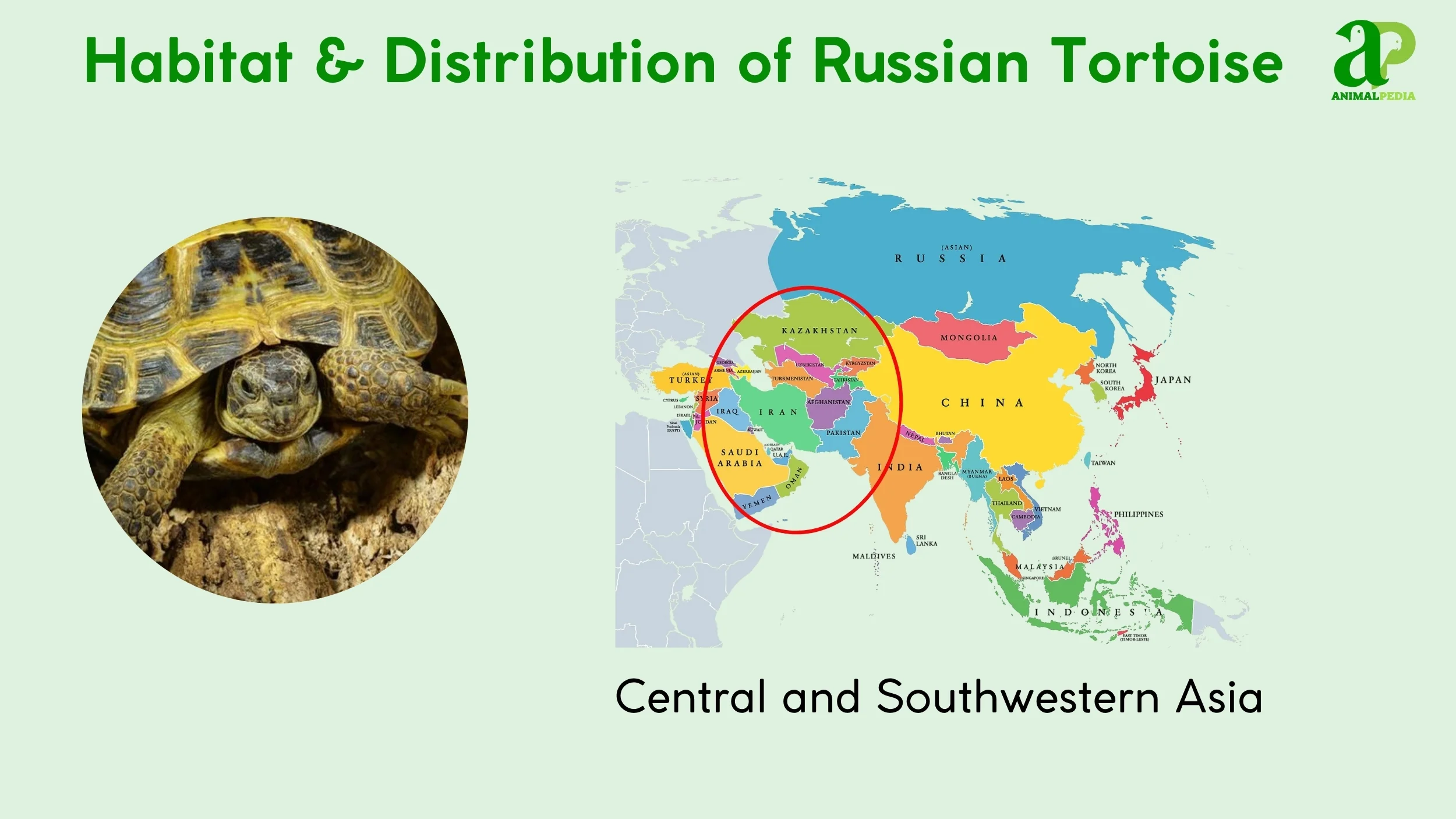
How Do Russian Tortoises Behave?
The behavior of Russian tortoises is highly adapted to their arid environment, characterized by strong instinctual responses for survival. These reptiles are master excavators, with their behavior categorized by distinct patterns.
- Diet and Feeding They are selective herbivores, grazing on vegetation and flowers, with a diet tailored to arid conditions.
- Movement and Abilities These tortoises are powerful burrowers, using their shovel-like limbs to create shelters from environmental extremes.
- Daily/Seasonal Patterns Their activity is diurnal and cyclical, with periods of brumation in winter and estivation in summer to handle temperature swings.
A closer look at their specific behaviors reveals the intricate relationship between the species and its harsh surroundings.
Diet and Feeding
Russian tortoises are herbivores, consuming a wide variety of herbaceous plants. Their diet primarily consists of grasses, weeds, and wildflowers [2]. They possess a strong beak designed to snip vegetation cleanly from the ground. Their feeding is a slow, methodical process of grazing across their territory, with a focus on plants high in fiber and low in protein [2, 26]. They do not actively hunt but rather forage for available plant life.
A notable adaptation is their ability to obtain moisture from the food they consume, a survival trait in their dry habitat. Russian tortoises can also consume seeds and dry plant matter, allowing them to sustain themselves during periods of low food availability [26].
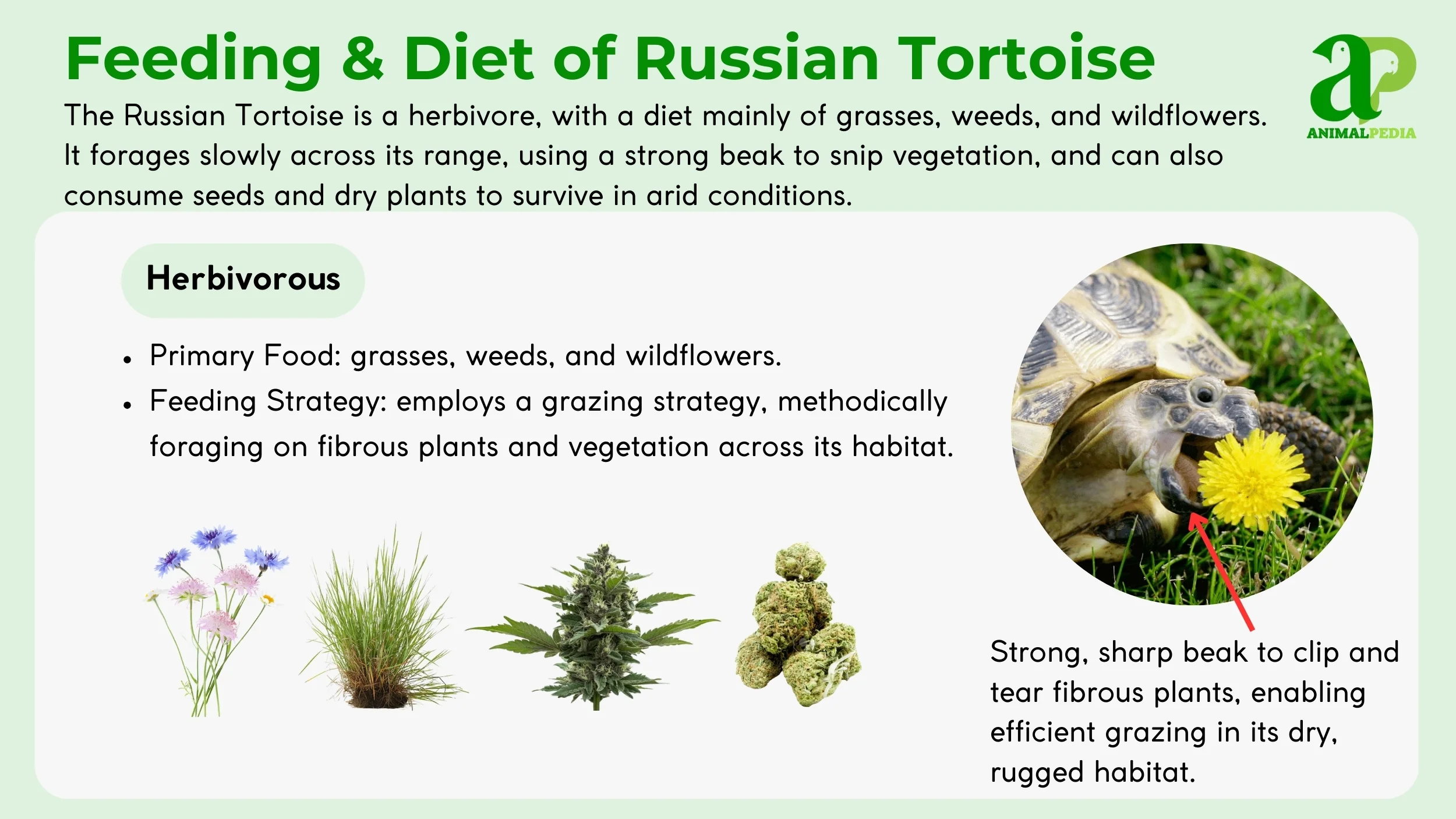
Movement and Abilities
Russian tortoises are known for a slow, purposeful walk. Their primary modes of movement are crawling and walking, driven by powerful limbs [10, 27].
- Crawling This is their most common form of locomotion, used for foraging and covering short distances.
- Walking A slightly more accelerated movement used when traversing longer distances within their range.
They are not particularly fast, with their top speed recorded at up to 0.21 km/h (0.13 mph) [23]. This low speed is compensated by their exceptional digging abilities.
Their most impressive ability is burrowing. Russian tortoises create extensive burrows, sometimes reaching up to 2 meters (6.5 feet) in length and 1 meter (3 feet) deep, using their shovel-like forelimbs to excavate the earth [28]. These burrows are essential, providing them a refuge from predators and extreme temperatures. Their physical strength allows them to push aside objects many times their own weight.
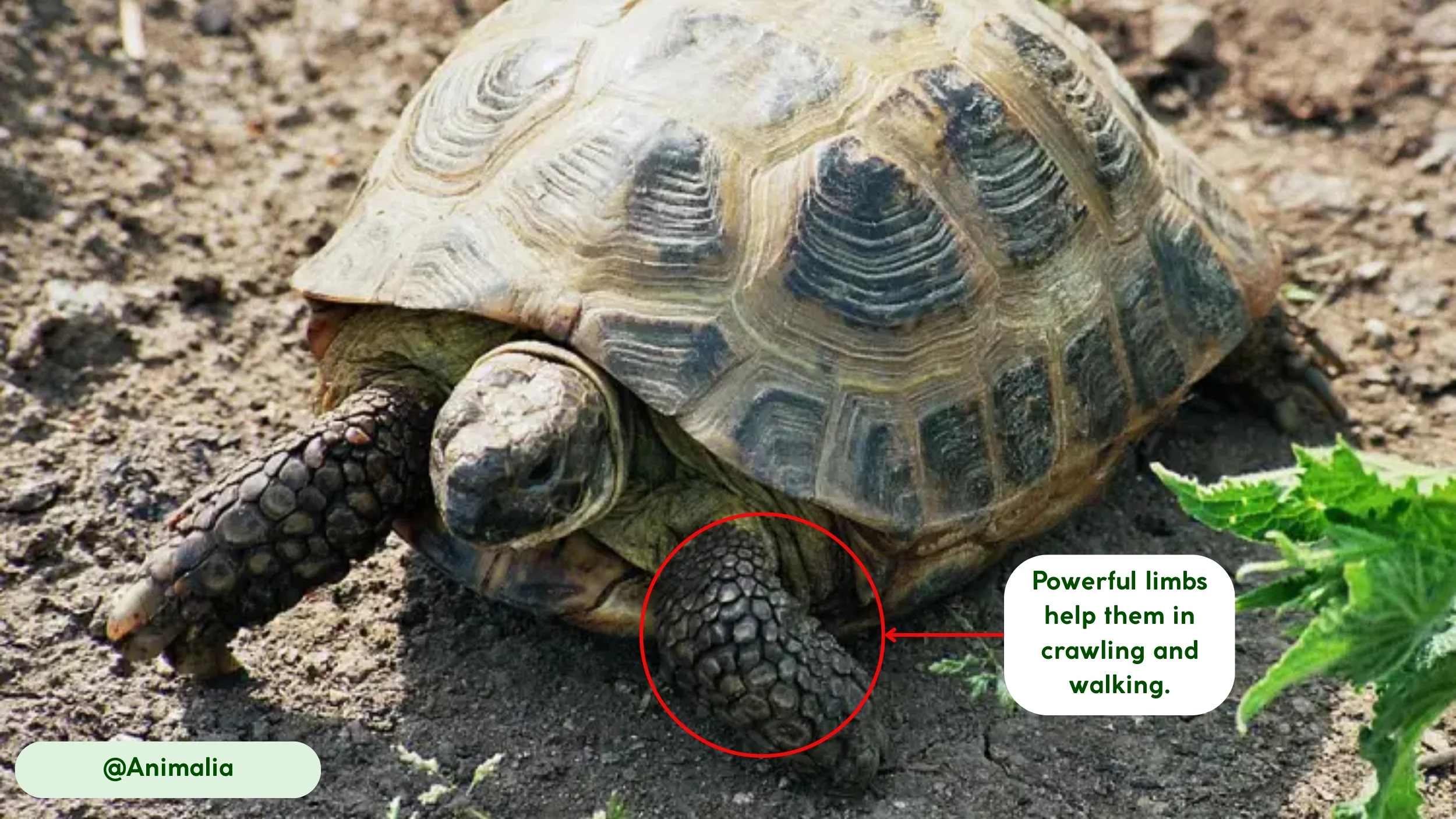
Daily/Seasonal Patterns
Russian tortoises are diurnal, active during the daytime. Their activity is highest during the cooler parts of the day, specifically the morning and late afternoon [12].
Their daily activity cycle is divided into distinct periods:
- Morning (7 AM – 11 AM) They emerge from their burrows to bask in the sun and warm their bodies. After warming, they begin foraging for food.
- Mid-day (11 AM – 4 PM) They retreat into burrows to avoid overheating from the sun’s intense heat.
- Late Afternoon (4 PM – 7 PM) They re-emerge to feed again before the evening.
Their seasonal activity is dictated by temperature. They are most active in spring and fall when temperatures are moderate. During these periods, they feed and reproduce.
These tortoises do not undertake long-distance migrations. Their movements are confined to their home range, where they navigate between feeding grounds and burrows. This localized behavior is a direct result of their need for a stable, secure shelter. The species’ reproductive cycle is an equally complex and fascinating aspect of their survival.
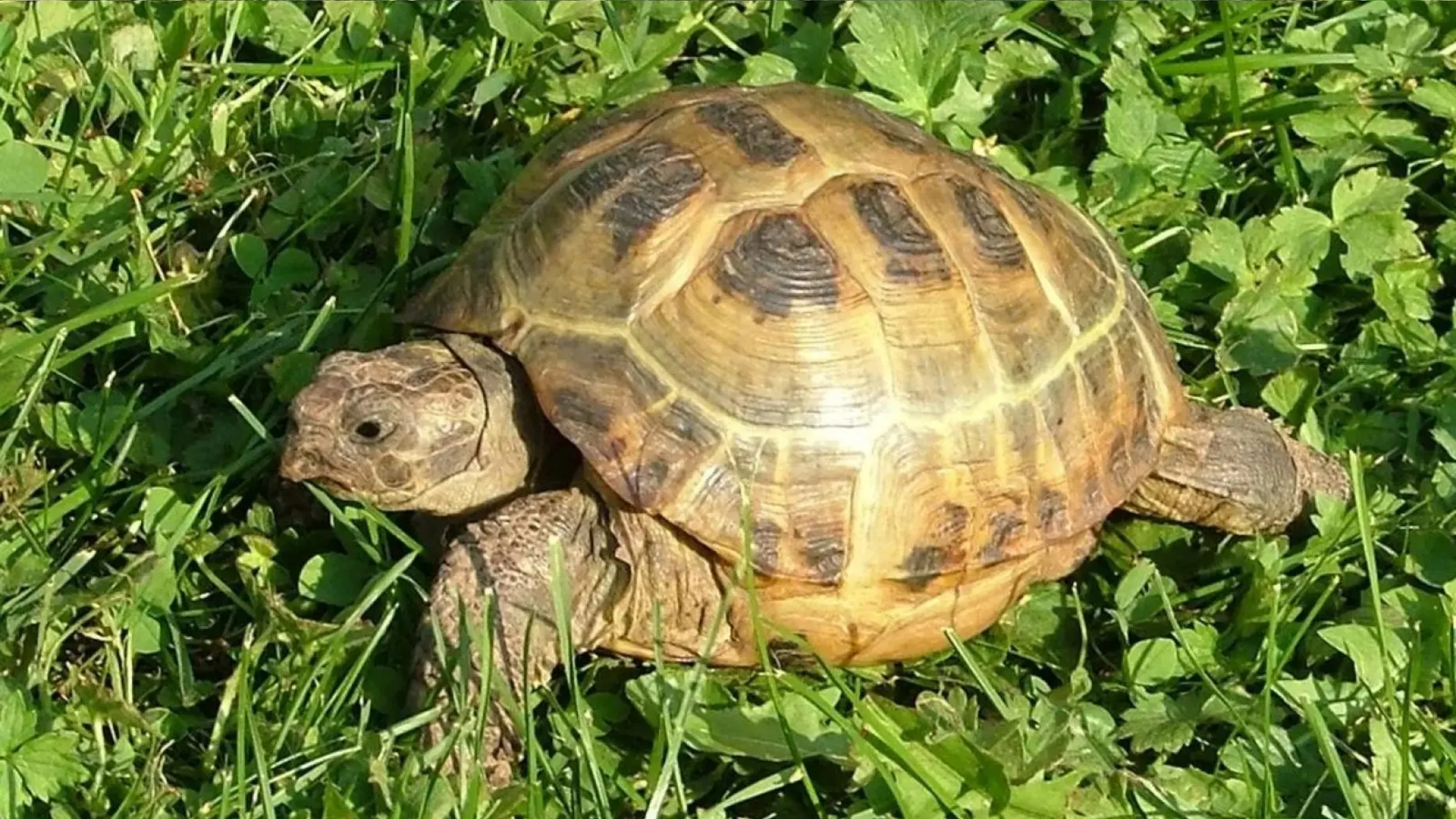
How Do Russian Tortoises Reproduce?
Russian tortoises are oviparous reptiles, which means they lay eggs. The mating season occurs during the spring after they emerge from brumation [15]. Courtship involves the male circling and ramming the female, behaviors that signal his intent to mate [25]. Females may show some resistance before the process, but once receptive, mating takes place. After successful fertilization, the female is able to retain the sperm for a period of time, which allows her to lay fertile eggs at a later date, often in multiple clutches within a single season.
After mating, a female will seek a suitable nesting site with soft soil. She digs a flask-shaped nest and deposits eggs, with a typical clutch containing 2 to 5 eggs [15]. These eggs incubate naturally within the soil. The incubation period lasts approximately 60 to 90 days, depending on environmental temperatures and humidity levels. There is no parental care after the eggs are laid; the hatchlings must emerge and fend for themselves. Understanding their longevity provides a broader perspective on their life cycle.
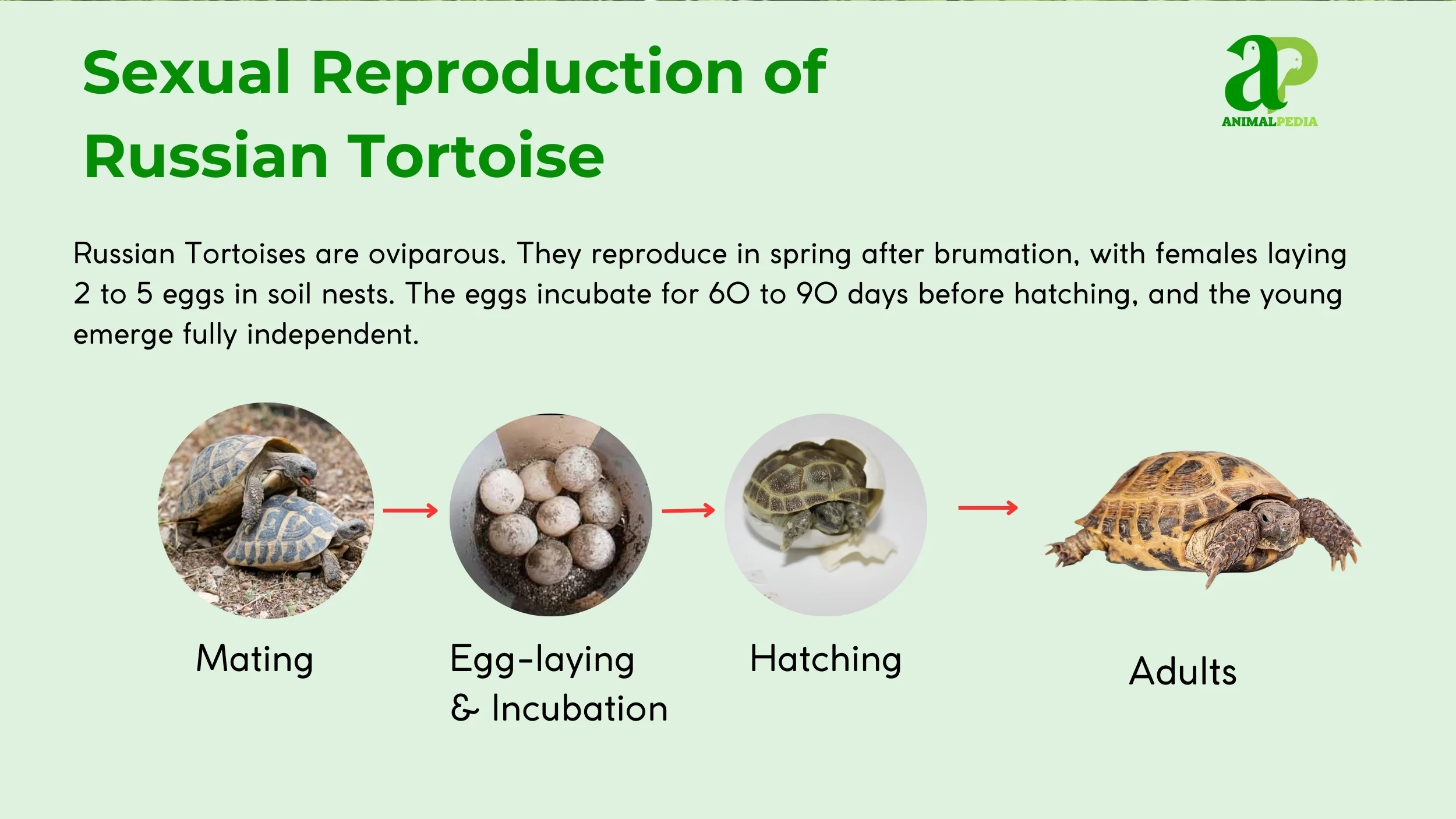
How Long Do Russian Tortoises Live?
Russian tortoises live 40 to 50 years on average in captivity, with some individuals reaching ages of 60 years or more [29]. In the wild, their lifespan is shorter due to factors such as predation, disease, and environmental pressures. A Russian tortoise reaches sexual maturity between 10 and 12 years of age, though growth continues throughout its life [29]. Maturity is determined by factors beyond age, including body mass and shell size.
Longevity is directly tied to environmental factors. A consistent diet, a suitable habitat, and adequate care contribute to their long lives in captivity. Wild tortoises face more significant threats, including attacks from predators like foxes and badgers, as well as disease and habitat degradation. Human impact, particularly the stress of collection for the pet trade, also affects their overall survival rates. The relationship between humans and this species is a topic of both scientific and social interest.
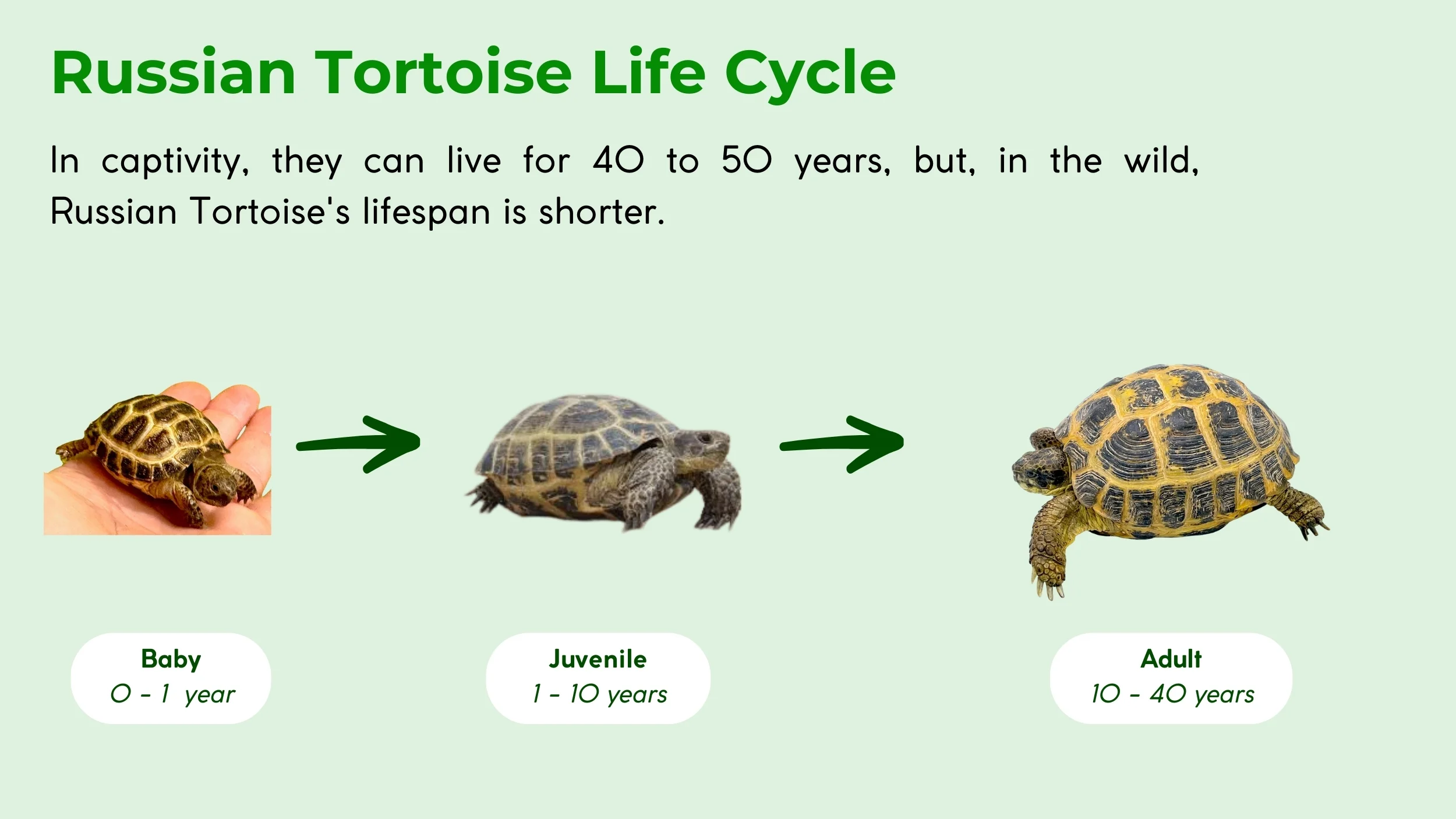
Are Russian Tortoises Beneficial to Humans?
Russian tortoises are beneficial to humans, primarily as popular pets and subjects for scientific study. They are a common species within the international pet trade, with a significant number of individuals kept in households globally [3, 18]. Their small size, docile nature, and specific care requirements have made them a good choice for pet owners with the knowledge to maintain their well-being. The sale of these tortoises contributes to a global industry that supports numerous businesses and jobs.
Their quiet, non-destructive behavior makes them a fitting pet for many home environments. The species is a valuable subject for herpetological research and provides insights into reptilian biology and physiology. They are also used in educational programs, helping to teach students about animal life and the importance of conservation. Their popularity as pets has, however, created new challenges for the species’ conservation status.
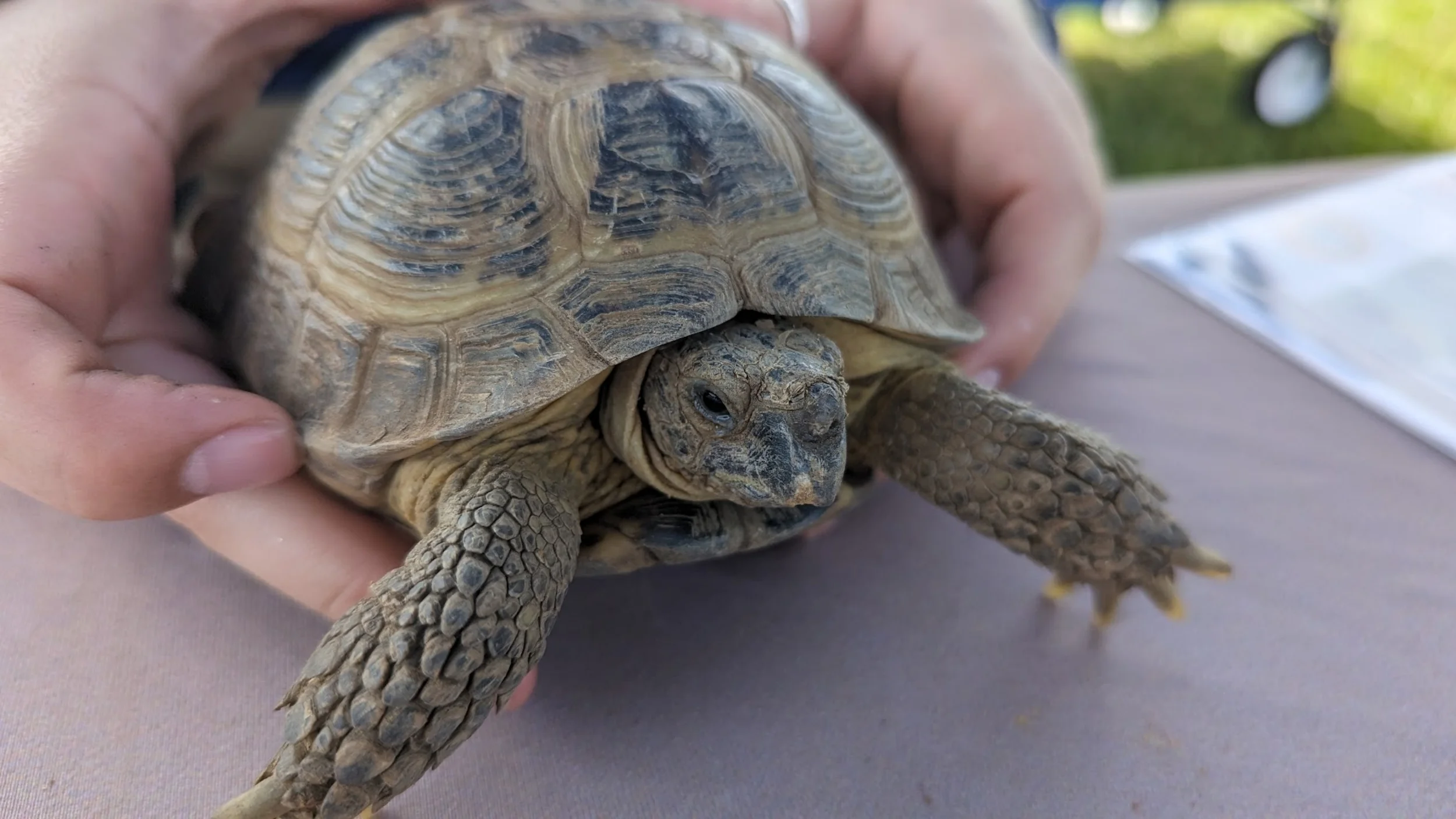
Are Russian Tortoises Endangered?
The Russian tortoise is not currently endangered; however, its conservation status is Vulnerable on the IUCN Red List of Threatened Species due to a decline in population [29]. The primary threats to the species are habitat degradation from agriculture and urbanization, as well as the unregulated international pet trade [4, 18]. The species is also a victim of the illegal collection of wild specimens for commercial purposes.
In their native habitat, the burrowing behavior of Russian tortoises is ecologically important, as it creates microhabitats that benefit other species in the arid ecosystem [26]. To support their survival, individuals can avoid purchasing wild-caught tortoises and instead acquire them from reputable, responsible breeders. These actions help reduce the demand that fuels the illegal trade and contribute to the health of both wild and captive populations. Their distinctive traits extend beyond their conservation status into a variety of surprising facts.
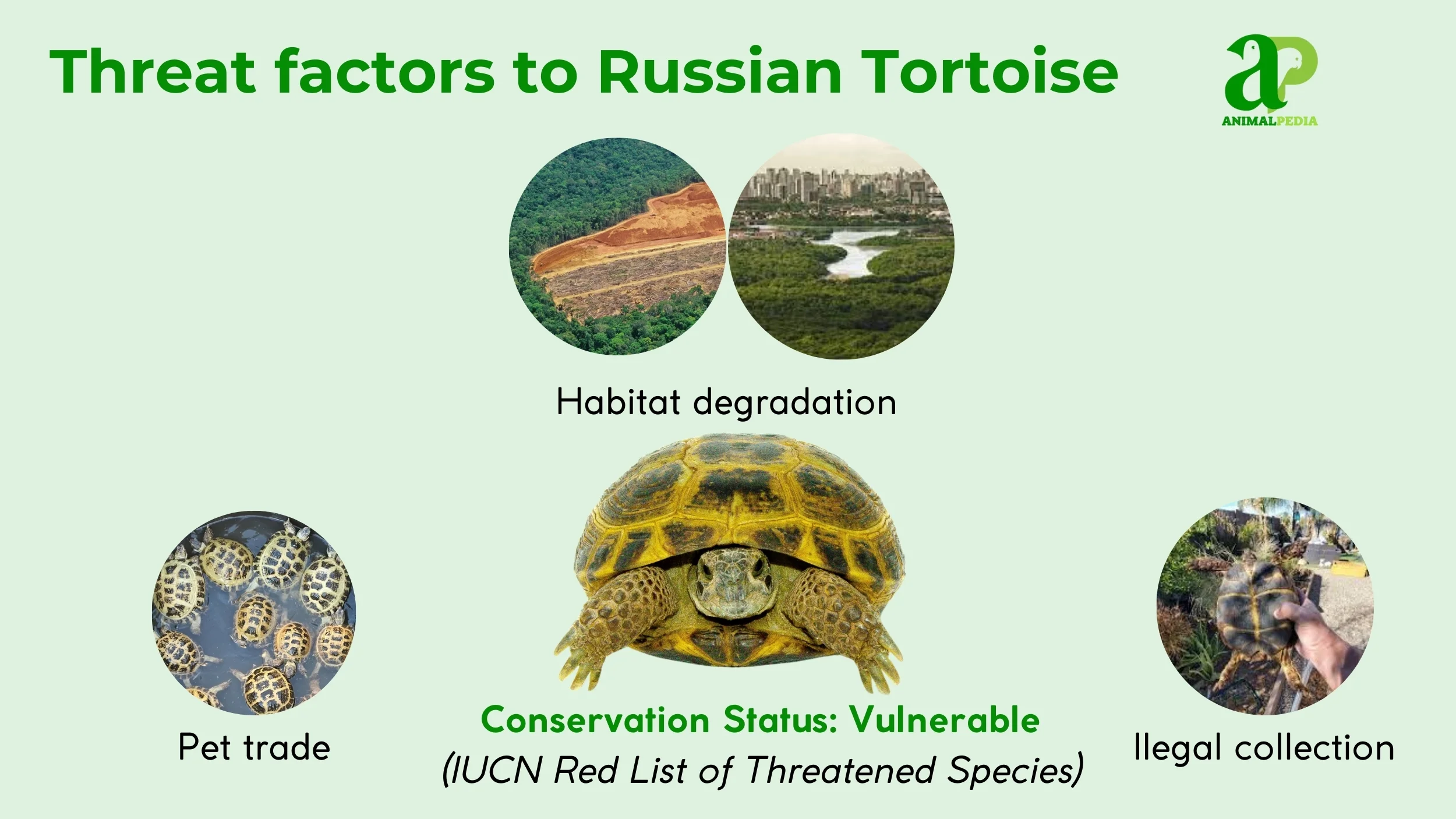
Frequently Asked Questions About Russian Tortoises
Is A Russian Tortoise A Good Pet?
Russian tortoises can be good pets for owners with the specific knowledge to meet their needs. They are relatively small and docile, but they do require a dedicated outdoor enclosure and a specialized diet for proper health and well-being.
Do Russian Tortoises Like Being Held?
No, Russian tortoises do not typically like being held. They are ground-dwelling animals that can experience significant stress from being lifted and handled. It is best to minimize handling to prevent injury or unnecessary anxiety for the animal.
What Makes A Russian Tortoise Happy?
A Russian tortoise is content when it has a suitable environment. This includes an enclosure with space to walk and dig, a healthy diet of appropriate plants and weeds, and a stable temperature gradient that allows for basking and cooling.
What Can Russian Tortoises Not Eat?
Russian tortoises cannot eat many common foods. Items to avoid include fruits high in sugar, dairy products, meat, and vegetables high in oxalates, such as spinach and kale. These foods can cause digestive problems and mineral imbalances.
How Intelligent Are Russian Tortoises?
Russian tortoises demonstrate a level of intelligence. They can learn to recognize their caregivers and exhibit problem-solving behaviors. They also have a good spatial memory, allowing them to navigate their territory and find food and shelter efficiently.
Conclusion
The Russian tortoise is a resilient and fascinating species, perfectly adapted to the challenges of its arid environment. Its powerful burrowing ability, unique reproductive strategies, and long lifespan make it a subject of great interest to both researchers and reptile enthusiasts. As a brand dedicated to providing expert knowledge on the animal kingdom, Animal Pedia is committed to helping you understand these and other remarkable creatures. We invite you to explore our extensive digital encyclopedia to continue your journey of discovery into Earth’s diverse fauna.

